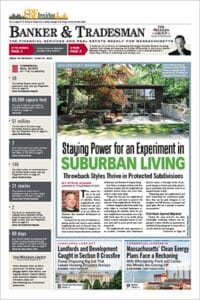
The recession may have hit some sectors hard, but car financing is not among the victims, according to a recently released survey.
The 2002 Automobile Finance Study, which measures the previous year’s loan activity, by the Consumer Bankers Association showed that Americans are buying cars at increasing rates and, despite the automobile industry’s 0 percent financing deals, some banks gained considerable ground in the auto financing arena.
Study respondents reported that loan origination dollars in the United States grew by 22.4 percent last year, compared to a growth rate of 8.3 percent in 2000.
Leasing profits continued to slide last year. In the leasing business it is imperative that lessors accurately predict the value of the vehicle when it is returned. “Last year, 38 percent of new leases were below guidebook values, compared to 3 percent a year earlier,” according to the study.
Captive finance companies, like Ford Motor Credit, have been shifting incentives away from leasing and toward finance deals because of heavy lease losses, said Fritz Elmendorf, spokesman for the CBA.
Because of that, consumers have seen more incentives to buy. Over the last two summers, motor companies have been offering 0 percent financing, which has generally forced banks to compete around those offers, said Elmendorf.
“Those offers have gotten even more generous, so it’s taken market share away from banks. Typically what banks have done is offered longer terms,” he said. Captive finance deals usually require shorter-term loans, two to three years or less. “Banks have done a big business in the five-year loan [area] and they’ve [loan periods] even gone out longer than that,” said Elmendorf.
Factory Philosophy
Longer-term loans seem to be in demand as people borrow more for their vehicles, as well, especially in the desirable SUV market. The average new loan size increased from $19,705 in 2000 to $20,656 in 2001, while the mean used vehicle loan remained largely flat at $14,707, compared to a mean used vehicle loan amount of $14,686 in 2000.
Chris Downs, executive vice president of Citizens Bank, runs the bank’s consumer finance area and said he’s seen loan size increasing as maturities are pushed out.
“That actually is a function of the geography, too. In some regions, people are pushing much longer terms, especially on the West Coast where you’re seeing a lot longer terms than you might see in New England,” said Downs. In New England, the vast majority of loans are about 60 months. However, maturity of the note is about 28 to 32 months because people just aren’t keeping their cars until the loan is paid off, he said.
“The smartest economic strategy is to hold onto a car free and clear for as long as you can drive it, but certainly longer than four or five years,” said Elmendorf. But people seem to be interested in the longer-term loans despite mixed intentions regarding whether to keep the vehicle that long.
“That’s been a long-term trend in the industry,” said Downs. “Obviously there are some people that will keep their car for the full term and others will only keep it for a year.”
Citizens transacts auto financing through 5,000 dealerships. Downs declined to give Citizens’ percentages for loan origination growth, citing concerns about competition, but revealed they are in line with the high-end averages cited in the study [22 percent].
While the bank is on target for a record year in 2002, a lot of that is attributable to the growth through acquisition Citizens has experienced this year.
Another other factor is that 0 percent financing, which is usually only available on the most popular car models, is helping Citizens’ business by drawing people into the car dealerships, Downs said.
“Car sales have held up very strongly through July with the latest round of incentives,” said Elmendorf. “Incentives are working in spite of a weak economy.”
Downs said though the percent financing may draw a customer into a dealership, oftentimes that results in a loan for a bank that is able to offer a longer term and, therefore, lower monthly payments.
“It gets them to come in the door and manufacturers are interested in turning units; they want to keep their factories going,” he said. To the manufacturers and dealers, where the car is financed isn’t as important as making sure it sells in the fist place.
Automated underwriting also has helped spur the jump in car sales. Nationally, automated loan decisions increased from 18 to 26 percent of all application decisions, according to the survey results. That helps close the deal for salesmen and allows the customer to purchase the car when they wish, even on a Sunday.
“I think that’s what dealers want to do. They don’t want to let that customer walk out the door and down the street [to another dealership] or even think about it,” said Downs.
It’s not surprising that car sales are doing well. Consumers usually view cars as a necessity. For that reason, delinquency rates and repossessions have not increased dramatically in the area, despite the recession and an increase in personal bankruptcies, said Downs.
“People will continue to pay their car loans because they need the cars to go to work,” he said.
Nationally, however, banks didn’t fare as well. Auto loan delinquency rates increased to 2.55 percent for accounts over 30 days past due in 2001 from 1.55 percent in 2000.
While some banks have found it to be a “tough” business to be in, said Elmendorf, others have thrived.
“Some banks still see this as a profitable core business in spite of what the manufacturers are doing to make it a tougher business,” he said.






